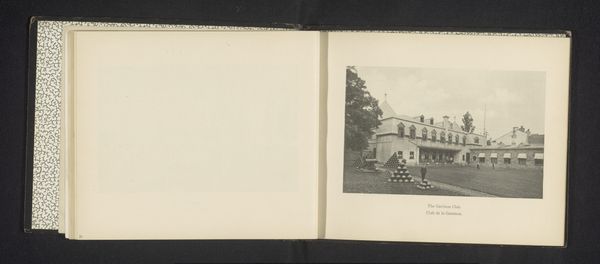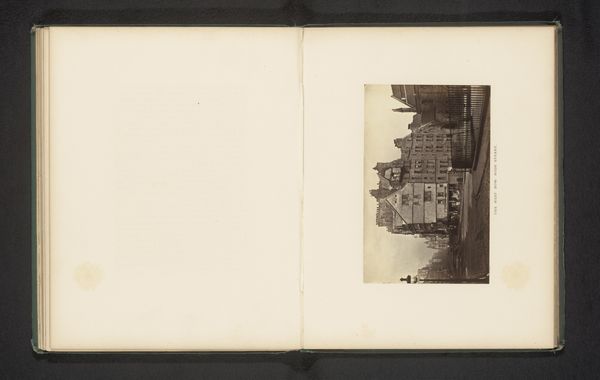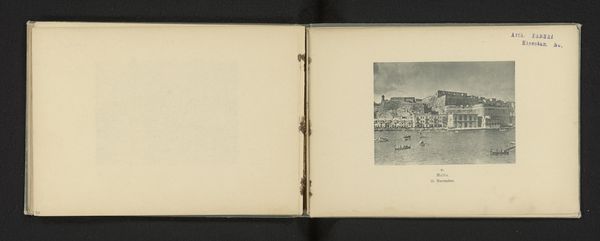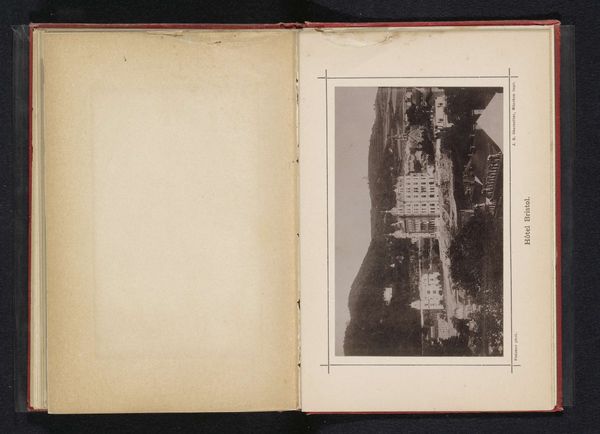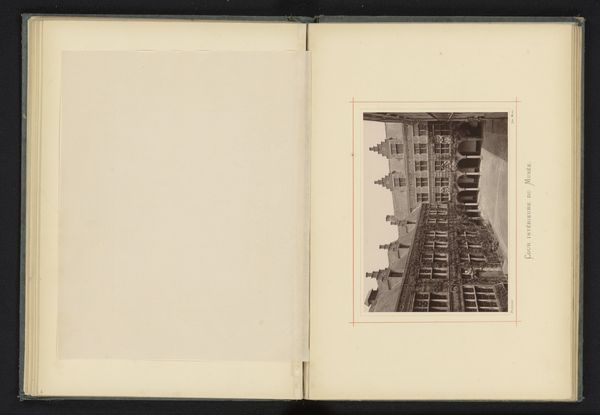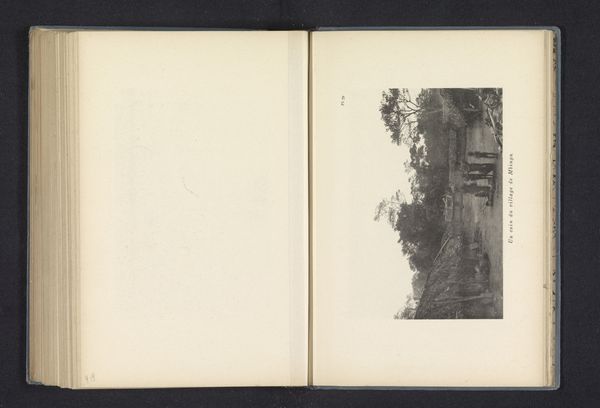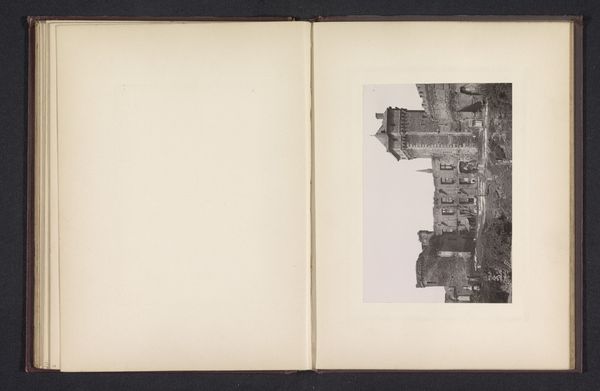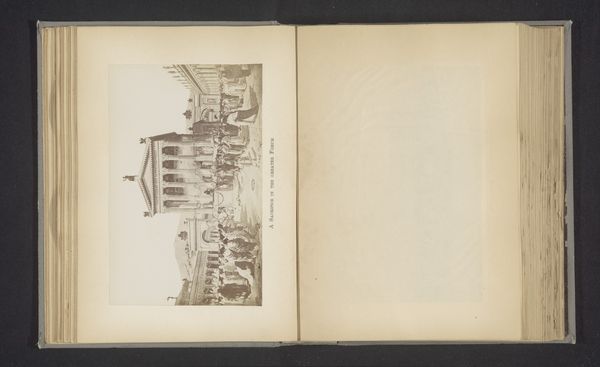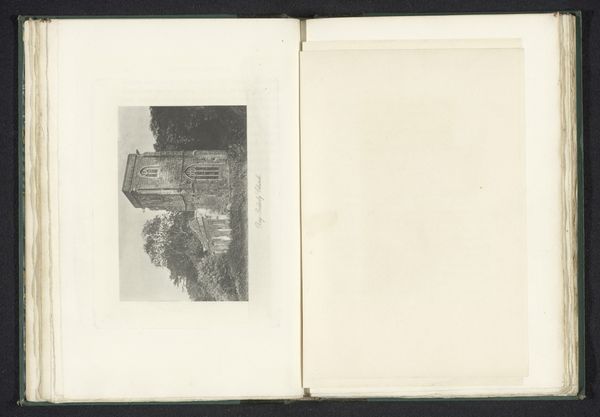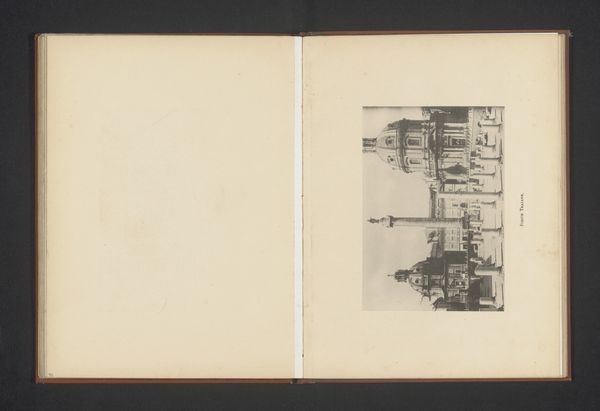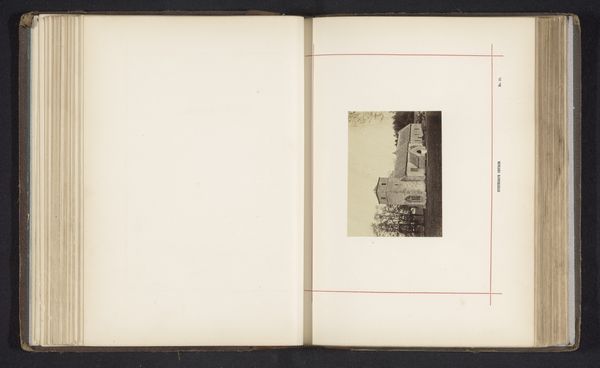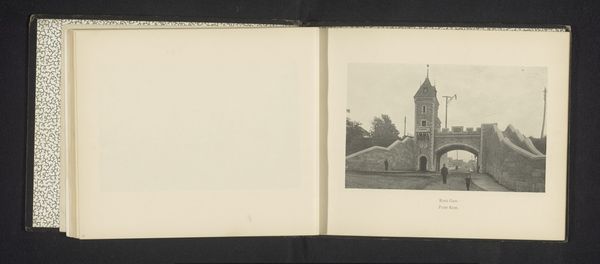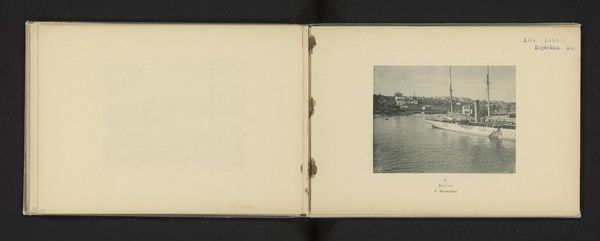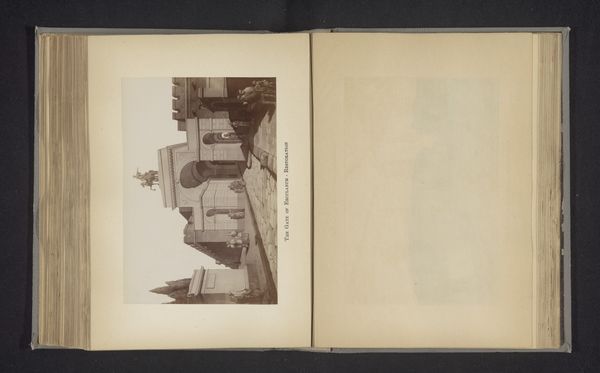
print, photography
# print
#
landscape
#
photography
Dimensions: height 105 mm, width 151 mm
Copyright: Rijks Museum: Open Domain
Editor: Here we have Kōzaburō Tamamura’s "View of Nagoya Castle," a photograph, dating from around 1895-1905, and displayed within what appears to be an album. I’m really struck by the contrast between the crisp detail of the castle and the softer, almost hazy quality of the surrounding landscape. What’s your take on this image? Curator: From a materialist perspective, consider the albumen print process that likely produced this image. Think about the labor involved in sourcing the materials, preparing the photographic emulsion, taking the shot, and developing the print. What kind of social context allowed Tamamura to produce and market such a picture? It wasn't mass production, but certainly more efficient than earlier processes. Editor: That’s interesting, I hadn't thought about it that way. So you're saying it's not just about the aesthetics of the image, but also about the means of its creation? Curator: Precisely. Consider, too, that photography at this time was gaining traction but still held a different cultural cachet than painting. What implications did this relatively novel method of production have? How does photography’s indexical relationship to reality complicate, or perhaps authenticate, notions of the ‘Orient’ in the burgeoning tourist trade? Editor: I guess photography presented a different kind of truth-claim than a painting would have. So the photo of Nagoya Castle became a commodity to be consumed, part of the exotic allure. Curator: Exactly. Think about the consumption of this image—as a souvenir for Western tourists, a signifier of Japan for internal consumption, and perhaps a promotional tool for modernization, as photographic material culture began to weave its way into the fabric of the everyday world. Editor: Seeing it as part of a larger network of production, labor, and consumption really shifts my perspective on what this image means. Thanks for illuminating that. Curator: Indeed. Analyzing the material conditions behind its production unveils so much about its cultural function. A deeper understanding!
Comments
No comments
Be the first to comment and join the conversation on the ultimate creative platform.
